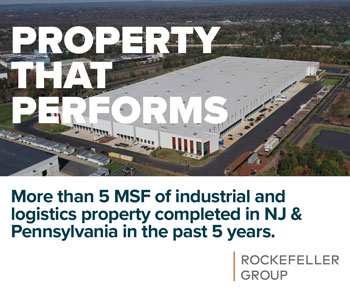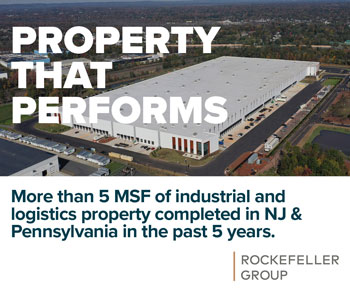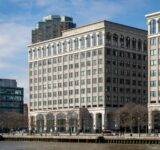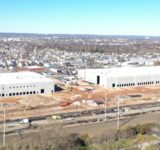By Michael G. McGuinness

Each day, the world creates 2.5 quintillion bytes of data, with 90 percent of all existing data created over the past two years alone, according to IBM. For owners and managers of commercial real estate (CRE) properties, and especially the office sector, “big data” may offer great potential, but it also presents real challenges.
Big data, as defined in Dr. Kimberly Winson-Geideman’s paper, is quantified by information that is high-volume, high-velocity and high-variety. Its value depends on its veracity (dependability, accuracy and quality) and gleaning those components that enhance decision-making for a business. For CRE, data is generated from website analytics (searches and hits), property transactions and sales, building operation sensors (lighting, temperature, humidity, foot traffic, etc.), aerial photos, maps, listings, surveillance cameras and traffic and weather sensors. Obtaining value from this data is the ultimate goal. Because real estate is still a local industry, small data is often more relevant since it tells us more about a market or building than big data. Developing a strategy to deal with the influx of data can be overwhelming. Cloud-based analytical and storage option services have alleviated some issues, but at a cost.
On the plus side, big data can help landlords to improve operational efficiencies and attract and retain tenants. On the negative side, certain data (monitoring tenant movements using Wi-Fi, cameras and sensors) may trigger privacy and legal issues if certain disclosure and transparency issues are not addressed. An even greater concern, especially for property owners who make significant investments in digital infrastructure to optimize connectivity for tenants, is the vulnerability to cyberattacks that can paralyze building operations and software systems for both landlords and tenants. Regardless, the proliferation of big data means big opportunities for investors in the cybersecurity sector and those who lease space to the industry, and big job growth for data scientists, data stewards, data visualizers and coders.
Operational efficiencies provide the greatest potential and disruption to the office property sector. Sensors can help book conference rooms, monitor energy and water use and indicate which employees are using specific workspaces and for how long. Extreme growth is projected for this area, as it is estimated that 80 billion IoT (internet of things) devices will be connected by 2025 (see the IDC Corp. study titled “Worldwide Internet of Things Installed Base by Connectivity Forecast, 2017-2021”). All this new information has produced a generation of smart buildings and smart systems that achieve functional efficiencies never imagined. The New York Times’ offices achieved a 70 percent savings at its 1.5 million-square-foot headquarters by reducing energy consumption through a system of sensors embedded in lighting and motorized window shades. Network-based security systems also offer some efficiencies to tenants: a building equipped with virtual credentialing (via smart phones) eliminates the need for entry keys or keycards, visitors can be prescreened and emailed a barcode for entry.
Sensors can also be used to created spaces that enhance the tenant experience, improve productivity and develop a cohesive work environment. Retail has been using this technology for many years: public Wi-Fi and other systems in shopping centers track shopper movements and capture location information to target advertising and inform tenant placement. The office sector can realize benefits seen in retail: access cards and carpet and ceiling sensors enable landlords to track tenant movements to determine optimal uses, locations of space and times of use. It is worth noting that over-reliance on big data runs the risk of compromising the personal connections at the core of the tenant-landlord relationship.
With more of our business and personal lives being logged and stored, cybersecurity has never been more necessary. An April 2018 study by Cushman & Wakefield, “Cybersecurity: A Major Capital Opportunity,” reports nearly 750,000 people in the U.S. worked in cybersecurity as of 2017, with 286,000 unfilled positions. That year saw a 75 percent jump (up to 1.4 million square feet) leased to cybersecurity companies. Most of these firms are prioritizing flexibility and scalability as they occupy more space to meet growth. This growth reflects the exponential increase in data connected to the internet. All of this presents huge challenges for commercial building owners and managers who are charged with ensuring the security of information technology (high speed internet, wireless), the availability and safety of operations technology (HVAC, lighting, access) and the integrity and security of data paths (cloud, smart systems).
Real estate practitioners can invest in new tech tools for gathering, processing and analyzing data, but ultimately must choose which are most appropriate for the business, property, service or problem/solution, and should not be pressured to use technology for technology’s sake.
In October, Gov. Phil Murphy released “The State of Innovation: Building a Stronger and Fairer Economy in New Jersey.” Strategic focus areas include: retaining and attracting the next generation of workers, leveraging smarter and more targeted incentives and programs to bolster high-wage and high-growth sectors, doubling venture capital investment in New Jersey and encouraging the expansion of higher education programs focused on the skills of the 21st century economy. I suggest we focus on big data and the wealth of next-gen jobs in its trail, especially programming languages, coding and artificial intelligence.
(Considerable portions of this article were obtained from the August 2018 NAIOP Research Foundation White Paper, “The Office Property and Big Data Puzzle: Putting the Pieces Together” by Kimberly Winson-Geideman, Ph.D, University of Melbourne, Parkville, Victoria, Australia)
MICHAEL MCGUINNESS is CEO of NAIOP New Jersey and has led the commercial real estate development association since 1997. NAIOP represents developers, owners, asset managers and investors of commercial, industrial and mixed-use properties, with 830 members in New Jersey and over 19,000 members throughout North America.










